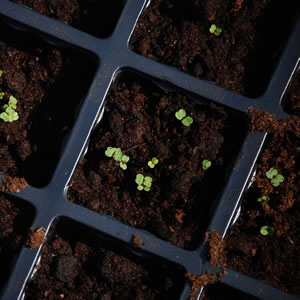- 8 reads

Health is a very important consideration when feeding our families. We have to be sure that everyone has the proper serving sizes of the right types of food. It is our responsibility as parents to be sure that we are choosing the healthiest foods that we can find. For that reason, many parents turn to natural, organic food.
More and more grocery stores carry organic food, but purchasing a lot of natural, organic items can be too expensive for many households. For that reason, my family has taken up organic gardening. Getting started involved a number of steps: setting up the garden, creating compost bins, instituting a rainwater collection system, weeding the garden, eating, recycling, and starting over!
- Getting Started: My daughter and I made a list of our favorite produce. Then we determined what we could easily grow on our little lot, in a couple of vegetable beds as well as some containers. We decided that the best seeds to use would be heirlooms and open-pollinated seeds. Heirlooms are from very old varieties of produce, and open-pollinated seeds are organic. We were able to find many options for these online.
By the time the seeds arrived in the mail, we already had the garden beds and the containers prepared. This made planting the seeds easy.
- Composting: We built a cheap compost bin for our organic leftovers and other items. After that, we made garden beds and filled containers with organic soil.
To build the compost bin, we took four large, wooden pallets and stood them up like a box, taping the corners together with electrical tape. That way, we could easily open the front side for gardening. To prevent larger animals from getting into the soil, we placed another pallet over the top without securing it.
It is fine to use non-organic materials in your compost bin. However, for a completely organic gardening experience, you will want to use organic matter in your bins. Start with non-rocky dirt and dry leaves. Then, add leftover produce, tea bags, coffee grounds and other food items. Remember to add dirt and dry leaves every so often, plus a little water if it hasn't rained in a while.
- Rainwater Collection: We save money on water bills by using a homemade rainwater collection system. We leave buckets outside under run-off areas to collect the water that we need for the garden.
- Weeding: We do not weed a lot, mostly because we do not like to. Personally, I think that weeding is the worst part of gardening, and this has rubbed off on my daughter. I weed about once a week in the beds, and I rarely ever have to weed the containers. This saves a huge amount of time on my part. I do not have to work in the garden for than a few minutes a day, and my daughter or I can water once a day when one of us has the chance.
- Eating!: Each year when the produce starts coming in, we have a lot of fun creating salads. This not only saves money on fresh, organic produce, but it also provides us with easy, healthy salads once or twice every day. Organic foods have higher concentrations of essential vitamins and minerals. The money savings and health benefits make growing our own food an excellent choice for my family.
- Recycling: The refuse from the beds and planters go into the compost bin. We turn the soil in the bin, adding dry leaves.
- Starting Over: Whenever I am doing anything for the garden, I encourage my daughter and her friends to help me. Younger children tend to especially love this. They learn many things throughout the entire process: science, health, nutrition, and environmental issues. They even learn about history when you discuss the value of using the heirloom seeds and where they come from.
I have had a lot of success with "planting parties" in which I invite my daughter’s friends to help with the gardening. They love to get dirty and have a great time. What’s more, we have picnics and barbecues when the planting is done!

